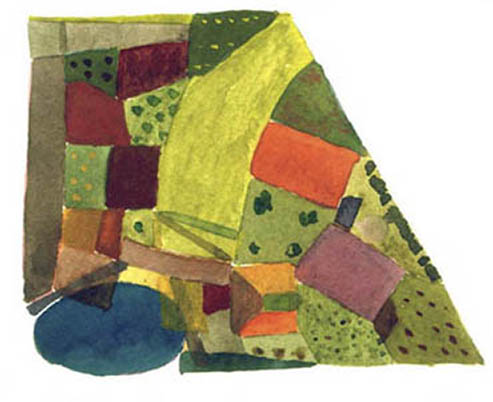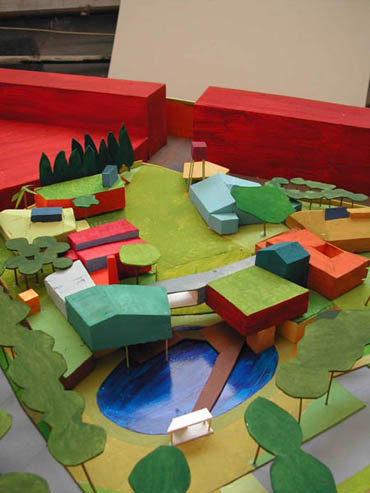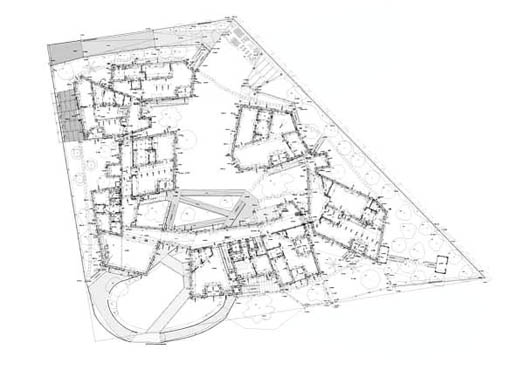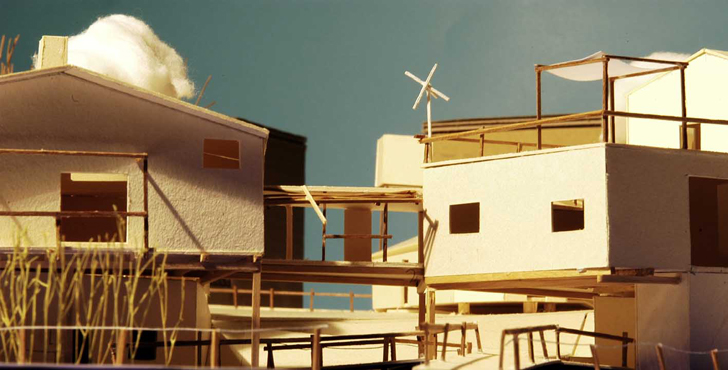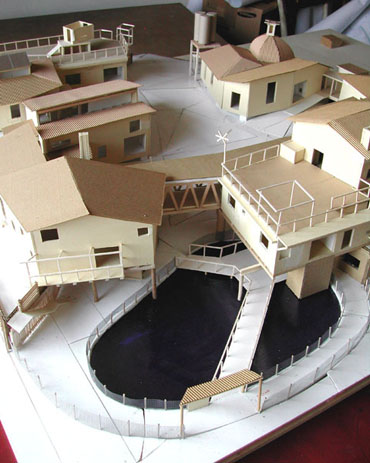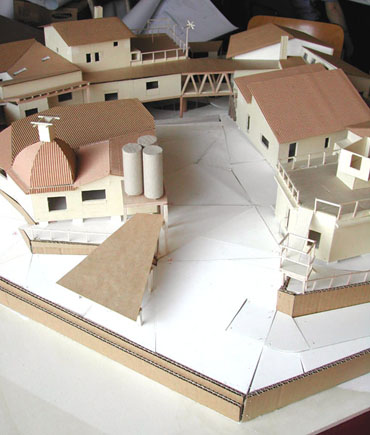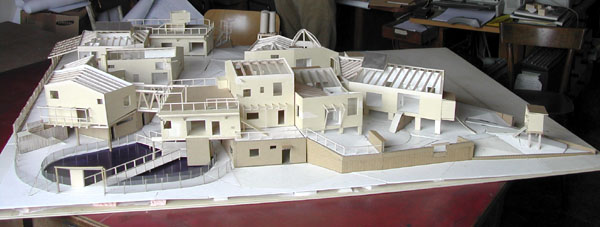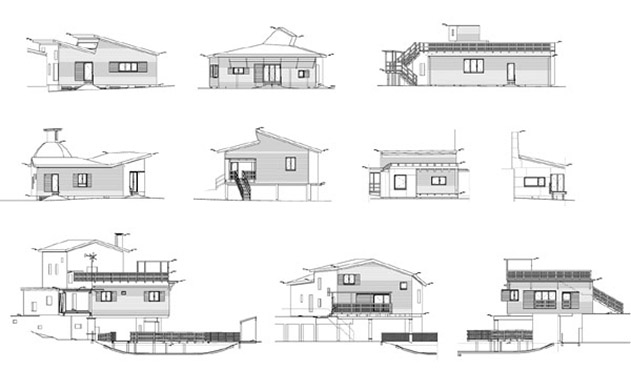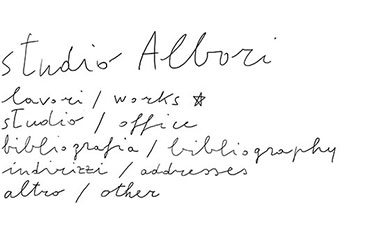Asilo nido e scuola materna, Roma / quartiere Muratella, 2005
Posta all’interno di un quartiere di recente realizzazione, nell’estrema periferia sud-ovest di Roma, la nuova struttura ha la forma di un borgo, di un villaggio, adagiato sulla collina esistente. Di questa collina era invece previsto lo sbancamento, così come erano già stati spianati i terreni circostanti per fare posto al nuovo quartiere residenziale. Questo villaggio, nel quale ogni sezione del nido e della scuola è una casa, dialoga con la vicina borgata ex-abusiva della Muratella (un suburbio in qualche misura “ancora umano”) e con il paesaggio della campagna romana che si affaccia, tra i nuovi casamenti, in lontananza. Il tentativo di connettere la scuola e il nuovo quartiere con la borgata è espresso anche nel disegno degli spazi pubblici e concretizzato nella piazza alberata che prosegue all’esterno il “flusso” spaziale della scuola.
Le case sono costruite in legno, e sono disposte e conformate in modo da massimizzare il guadagno di energia solare nella stagione fredda. Lo scavo esistente ai piedi della collina, realizzato durante la costruzione del nuovo quartiere, viene riempito d’acqua e trasformato in un lago, utilizzato anche come bacino di raccolta e riciclo delle acque piovane provenienti dalle coperture.
Gli spazi esterni complementari alle nuove case costituiscono una sorta di “scuola all’aperto”, articolata in cortili, prati, pergolati, orti, frutteti, collegati e distinti tra di loro.
Dopo dieci anni di appalti, lavori, sospensioni, fallimenti, le rovine del poco che era stato costruito sono state demolite nel 2015.
Nursery and kindergarden, Rome / quartiere Muratella, 2005
In a recently built neighbourhood in the extreme south-west suburbs of Rome, the new structure is shaped like a village, on an existing hill. The hill had been due to be flattened, just as the surrounding area had been in order to make way for a new residential area. This village, in which each section of the nursery and school is a house, communicates with the neighbouring area of the Muratella (a suburb which is in a way “still human”) and with the lanscape of the Roman countryside visible in the distance, beyond the new blocks. The attempt to connect the school and the new neighbourhood is also expressed in the design of the communal spaces and materialized in the wooded square which proceed out of the spatial “flow” of the school.
The houses are built in wood, and are arranged and shaped to maximise the benefit of solar energy in winter.The existing excavation at the foot of the hill, made during the construction of the new neighbourhood, is filled with water and transformed into a lake, used also as a pond to collect and recycle rainwater from the roofs.
The outdoor spaces of the new houses constitute a sort of “open air school”, arranged as courtyards, lawns, pergolas, vegetable gardens and orchards, connected and yet distinct.
After ten years of contracts, works, interruptions, and bankruptcy, the ruins of what had been built were demolished in 2015.
Progetto di concorso, primo premio / Competition project, first prize
con / with
Grazia Honegger Fresco, Alessandro Rogora, Gianluigi Toccafondo
Committente / Client: Comune di Roma |
